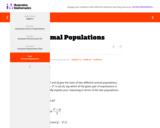
This Illustrative Mathematics task students have to interpret expressions involving two variables in the context of a real world situation.
- Subject:
- Mathematics
- Material Type:
- Activity/Lab
- Provider:
- Illustrative Mathematics
- Date Added:
- 04/26/2022

This Illustrative Mathematics task students have to interpret expressions involving two variables in the context of a real world situation.
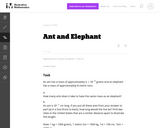
In this problem students are comparing a very small quantity with a very large quantity using the metric system. The metric system is especially convenient when comparing measurements using scientific notations since different units within the system are related by powers of ten.
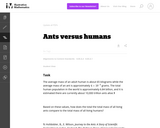
This task requires students to work with very large and small values expressed both in scientific notation and in decimal notation (standard form). In addition, students need to convert units of mass.
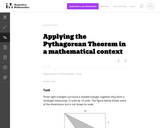
This task requires students to apply the Pythagorean Theorem.
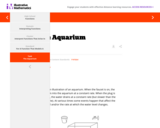
The purpose of this task is to connect graphs with real life situations. Graphs tell a story. Specific features of a graph connect to specific features of a story. A point on a graph captures a specific instant in the story.
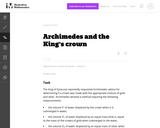
The famous story of Archimedes running through the streets of Syracuse (in Sicily during the third century bc) shouting ''Eureka!!!'' (I have found it) reportedly occurred after he solved this problem. The problem combines the ideas of ratio and proportion within the context of density of matter.
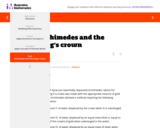
This problem combines the ideas of ratio and proportion within the context of density of matter.
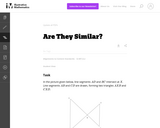
In this problem, students are given a picture of two triangles that appear to be similar, but whose similarity cannot be proven without further information. Asking students to provide a sequence of similarity transformations that maps one triangle to the other focuses them on the work of standard G-SRT.2, using the definition of similarity in terms of similarity transformations.
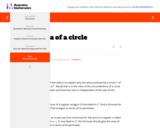
This purpose of this task is to develop an understanding of the formula for the area of the circle.
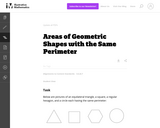
This problem is part of a very rich tradition of problems looking to maximize the area enclosed by a shape with fixed perimeter. Only three shapes are considered here because the problem is difficult for more irregular shapes.

The purpose of this task is primarily assessment-oriented, asking students to demonstrate knowledge of how to determine the congruency of triangles.
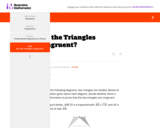
The purpose of this task is primarily assessment-oriented, asking students to demonstrate knowledge of how to determine the congruency of triangles.

This this task about mixing paint requires students to graph ratios on a coordinate plane. It is a standard language in ratio problem.
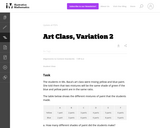
This this task about mixing paint requires students to graph ratios on a coordinate plane. It is a standard language in ratio problem.
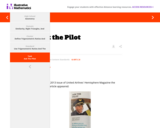
This task can be used as a classroom activity. There is a lot of opportunity to discuss the process of mathematical modeling. It serves to illustrate MP 4 - Model with Mathematics, not just by engaging in the practice, but also by investigating what this practice entails.
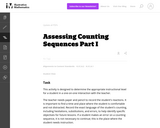
This activity is designed to determine the appropriate instructional level for a student in a one-on-one interaction with the teacher.
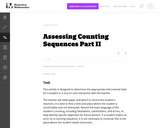
This activity is designed to determine the appropriate instructional level for a student in a one-on-one interaction with the teacher.
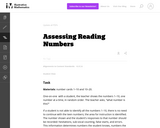
In this assessment in a one-to-one setting, a student is shown the numbers from 1Đ10, one number at a time, in random order. The teacher asks, Ňwhat number is this?"
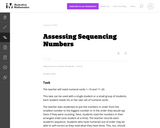
This assessment task can be used with a single student or a small group of students. Each student needs his or her own set of numeral cards.
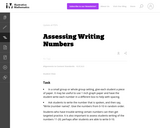
This assessment may be used in a small group or whole group setting, give each student a piece of paper. Students who have trouble writing certain numbers can then get targeted practice.